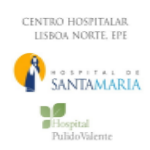Ultrahigh dose-rate radiation therapy for cancer
The challenge
Cancer is a leading cause of death in Europe, with the total number of deaths each year estimated at 1.3 million.[1] The economic impact is significant and cancer remains an essential health policy priority. Advances in screening, diagnostics, and treatment have been fundamental to improve survival, but have led to an increase in healthcare spending across Europe, estimated at €103 billion.[2]
Together with surgery, chemotherapy and immunotherapy, radiotherapy is a major component of cancer care. Based on radiotherapy indications, more than 50% of cancer patients receive at least one radiation treatment during the course of their disease, either alone or in combination with other treatment modalities.[3]
In the last decade, major advances in high precision treatment delivery and multimodal imaging allowed radiotherapy to be better tolerated, with an increased proportion of patients living longer, cancer-free or with durable cancer control, and with fewer side effects. Despite these improvements, radiation-induced side effects limit dose escalation and can compromise quality of life.[4]
Resistance to conventional radiotherapy impacts treatment efficacy, which results in a lowering of patients’ survival rates.[5] It also reduces the cost-effectiveness of cancer treatment, a problem for the healthcare system.
The solution
The FLASHKNiFE project team have created an innovative approach to radiotherapy, to overcome the challenges of conventional radiotherapy as a cancer treatment. Their solution promises to offer a more powerful and better tolerated treatment with no equivalent on the market today.
Patients could be cured in a single session as opposed to 5 to 20 sessions for conventional radiotherapy, decreasing care costs. A better tolerated treatment with fewer side effects, means better patient comfort and reduces the need to treat side effects.
FLASHKNiFE uses an ultra-high radiation output of pulsed electron beam at dose-rates of ≥100 Gy/second, which is much higher than the radiation output in traditional radiotherapy. The device offers a treatment time which is considerably shorter than conventional radiotherapy, at around 0.1 second for a single session. The short duration of dose delivery has been found to increase the differential effect between tumors and normal tissues.[6] It has the same destructive effect on the tumor as conventional radiotherapy, while sparing normal tissue.[7]
The FLASHKNiFE device can be used to treat superficial tumors, where radiation-induced toxicity remains a significant problem with irreversible side effects for the patient. For example, cutaneous cancers and shallow lymph node. It can also be used for cancers that are difficult to remove completely during surgery. For example, pancreatic cancer resection, locally advanced gynecologic or rectal cancers.
Expected impact
The project team aim to conduct a clinical investigation of the benefits of their solution first for superficial tumor. They intend to obtain a CE mark for their medical device, and prepare for large-scale market diffusion.
FLASHKNiFE promises to improve quality of life for cancer patients across Europe by reducing the side effects of radiation therapy. Thanks its potential to shorten treatment duration, FLASHKNiFE also promises to improve cancer care pathways and reduce the economic burden that cancer treatment places on the healthcare system.
External partners
- Aixial
- Azapharm
References
[1] European Commission, Europe’s Beating Cancer Plan. [online] Available at: <https://ec.europa.eu/health/system/files/2022-02/eu_cancer-plan_en_0.pdf> [Accessed 27 March 2022].
[2] European Commission, Europe’s Beating Cancer Plan. [online] Available at: <https://ec.europa.eu/health/system/files/2022-02/eu_cancer-plan_en_0.pdf> [Accessed 27 March 2022].
[3] Atun, R., et al. 2015. Expanding global access to radiotherapy. Lancet Oncology, 16(10), 1153-1186.
[4] Rosenblatt, E., Zubizarreta, E., Paediatric Radiation Oncology. 2022. [online] Available at: <https://www.researchgate.net/profile/Yavuz-Anacak/publication/318207041_PAEDIATRIC_RADIATION_ONCOLOGY/links/595c995eaca272f3c089a1f9/PAEDIATRIC-RADIATION-ONCOLOGY.pdf> [Accessed 27 March 2022].
[5] Galeaz, C., Totis, C., Alessandra, B. Radiation Resistance: A Matter of Transcription Factors. Frontiers in Oncology [online] Available at: https://www.frontiersin.org/articles/10.3389/fonc.2021.662840/full [Accessed 27 March 2022].
[6] Favaudon, V., Caplier, et al. 2014. Ultrahigh dose-rate FLASH irradiation increases the differential response between normal and tumour tissue in mice. Science Translational Medicine, 6(245), 245.
[7] Vozenin, M.C., et al. 2018. The Advantage of FLASH Radiotherapy Confirmed in Mini-pig and Cat-cancer Patients. Clinical Cancer Research, 25(1), 35–42.
Members

CLC/InnoStars: France
Partner classification: Business
Establish an ongoing policy of innovation applied to our own products and services. Develop a particularly extensive in-house technological base. Work closely with research centers, Transfer technological developments and feedback from one field to the others. Develop technologies in specialist laboratories organized around a limited number of top experts.
ALCEN


CLC/InnoStars: InnoStars
Partner classification: Hospital / University Hospital
The Unidade Local de Saúde de Santa Maria (ULSSM) was created on 1 March 2008, by Decree-Law Nr. 23/2008, on 8 February 2008, from the amalgamation of Santa Maria Hospital and Pulido Valente Hospital. These are two important University Schools are worth being mentioned in the Portuguese National Health Service. The Unidade Local de Saúde de Santa Maria (ULSSM) has considerable abilities in human resources, applied technologies and accumulated know-how, along with the support it gives to populations from its area of direct influence. It offers a differentiated reference in multiple clinical areas, both regionally and nationwide, including in Portuguese-speaking African countries (the PALOP).
Unidade Local de Saúde de Santa Maria (ULSSM)
Centro Hospitalar de Lisboa Norte, EPE, Av. Egas Moniz 1649, 2070, Portugal
Key Activities in Corporate Innovation
Pharma, Diagnostics, Imaging
Key Activities in Social Innovation
Healthcare provision
Key Activities in Business Creation
Incubation, Testing & Validation
Key Activities in Education
Medical faculties, Healthcare professional education/training


CLC/InnoStars: France
Partner classification: Education, Research, Hospital / University Hospital
Gustave Roussy is the premier European Cancer Centre uniting patient care, research, and teaching that places innovation at the heart of a human, scientific, and technological revolution in the fight against cancer.
Gustave Roussy Cancer Campus Grand Paris
Gustave Roussy Cancer Campus Grand Paris, 114 Rue Edouard Vaillant, 94800 Villejuif, France
Key Activities in Research and Developement
Other research, Life science, Clinical research
Key Activities in Social Innovation
Healthcare provision
Key Activities in Business Creation
Testing & validation
Key Activities in Education
Medical faculties, Healthcare professional education/training


CLC/InnoStars: France
Partner classification: Business
ProductLife Group is a life science service provider operating in 130 countries within the filed of regulatory affairs, pharmacovigilance, quality and pharmaceutical development. Our Purpose is to improve human health by delivering regulatory compliance services for the safe and effective use of medical solutions. Our Vision is to always improve the value we deliver to our team members and partners to become the leading global Life Sciences strategic partner for Regulatory affairs, Safety & pharmacovigilance, CMC & quality compliance, but also Medical Devices & Vaccines.
Key Activities in Research and Developement
Life science, Social science/health economics
Key Activities in Corporate Innovation
Pharma, Med Tech, Consumer Product, Nutrition
Key Activities in Business Creation
Business coaching
